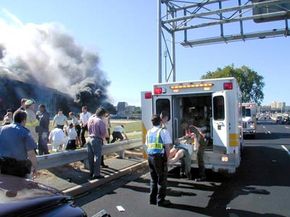Emergency Room Patients
One of the most amazing aspects of emergency medicine is the huge range of conditions that arrive on a daily basis. No other speciality in medicine sees the variety of conditions that an emergency room physician sees in a typical week. Some of the conditions that bring people to the emergency room include:
- Car accidents
- Sports injuries
- Broken bones and cuts from accidents and falls
- Burns
- Uncontrolled bleeding
- Heart attacks, chest pain
- Difficulty breathing, asthma attacks, pneumonia
- Strokes, loss of function and/or numbness in arms or legs
- Loss of vision, hearing
- Unconsciousness
- Confusion, altered level of consciousness, fainting
- Suicidal or homicidal thoughts
- Overdoses
- Severe abdominal pain, persistent vomiting
- Food poisoning
- Blood when vomiting, coughing, urinating, or in bowel movements
- Severe allergic reactions from insect bites, foods or medications
- Complications from diseases, high fevers
Advertisement
